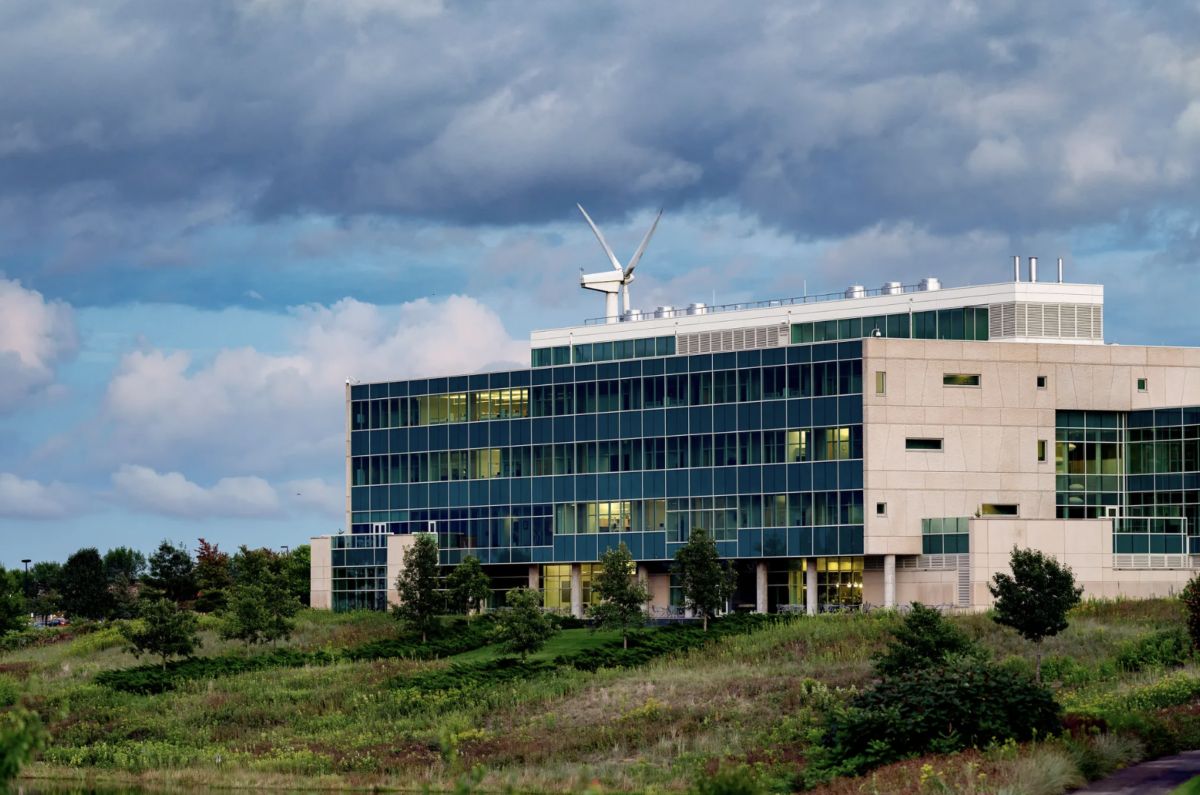 (The Great River Energy Headquarters in Maple Grove, Minnesota. Credit: Tony Webster / Creative Commons )
(The Great River Energy Headquarters in Maple Grove, Minnesota. Credit: Tony Webster / Creative Commons )By Frank Jossi, Energy News Network
A consortium of Minnesota electric cooperatives is preparing to apply for $970 million in federal funding that could help propel rural utilities toward the state’s 100% clean electricity target.
The state’s largest generation and transmission cooperative, Great River Energy, convened the group, which so far includes more than half of its members. The utilities are collaborating on an application for the U.S. Department of Agriculture’s Empowering Rural America, or New ERA, program.
The $9.7 billion program, created under the Inflation Reduction Act of 2022, is designed to help rural electric cooperatives pay for clean energy, carbon capture, energy storage and transmission projects. It represents the largest federal investment in rural electricity since the 1930s.
Great River Energy’s consortium includes proposals for solar, storage, distributed energy resource management systems and other initiatives. The program wants co-ops to propose “ways to get clean energy on the system to reduce the greenhouse gas emissions and improve resiliency and reliability,” said Jamie Stallman, energy conservation and optimization specialist for Great River Energy.
A new report released Wednesday by the climate policy advocacy group Evergreen Action highlights the opportunity that rural cooperatives have under New ERA and other federal programs.
“Rural America deserves a thriving clean energy economy that’s affordable, reliable, and carbon-free,” said report author and Evergreen energy policy transition lead Mattea Mrkusic. “The IRA offers a once-in-a-generation opportunity to strengthen [co-ops’] balance sheets and make clean electricity cheaper, cleaner, and more reliable for member-owners.”
The report details how generation and transmission cooperatives serving Minnesota could reduce or eliminate coal plants and provide members with less expensive electricity. The report said wind energy offers substantial savings over coal energy produced at Great River Energy’s two coal-fired plants.
Jeff Haase, director of member services, distributed energy resources and end use strategy for Great River Energy, said the money will help the company comply with the state’s new law requiring that utilities generate 100% of their electricity from carbon-free resources by 2040. The utility has a goal of being 90% carbon-free by 2037 and reducing natural gas generation to 5% of its load.
“GRE is well positioned to meet our goals, but we’re looking at the funding opportunities through the federal government as a way of helping to reduce the costs for our members,” Haase said.
Mrkusic said cooperatives could receive even more federal support by stacking incentives such as adders available if they serve low-income communities. Federal money could pay for 60% of a project’s costs in low-income areas, she said.
“Rural coops serve 92% of the ‘persistent poverty’ counties in the nation, so this is an equity issue, too,” Mrkusic said.
Minnesota Rural Electric Association CEO Darrick Moe said he and his organization’s members like the influx of federal money but are focused on projects that increase affordability and reliability.
Evergreen Action’s report calls for closing natural gas plants, a goal Moe does not endorse.
“I think this idea that we can only rely on solar and wind in the short term is not true,” Moe said. “I want to be careful not to say anything that contributes to that sentiment.”
Applications for the New ERA program are due in September. Stallman said planning has intensified as the deadlines approach. He continues to speak with cooperatives who have not joined and checks in with federal agricultural officials to let them know the proposal’s status and to hear feedback.
Applying as a consortium offers advantages, he said. It allows federal officials to evaluate the portfolio of projects more efficiently, and also “eases the burden” on individual members.
Federal agricultural officials have told Stallman the agency wants “fully baked” projects that co-ops will begin once receiving grant or loan money. The consortium continues to speak to members about joining the consortium while preparing the application.
The Empowering Rural America program does not require matching grants, he said. The federal government could fund the consortium’s $970 million proposal entirely through a grant or a grant and low-interest loans, Stallman said.
Spokesperson Rob Davis said that Connexus Energy, the state’s largest electric cooperative, is working on its own application and also seeking other federal money for clean energy projects.
“Where there’s an opportunity to create more value for our members we will participate and pursue them,” Davis said.
The federal government has not said when it plans to announce grant and loan recipients.
Correction: Connexus Energy is working on its own application for the federal Empowering Rural America program. An earlier version of this story mischaracterized its application.